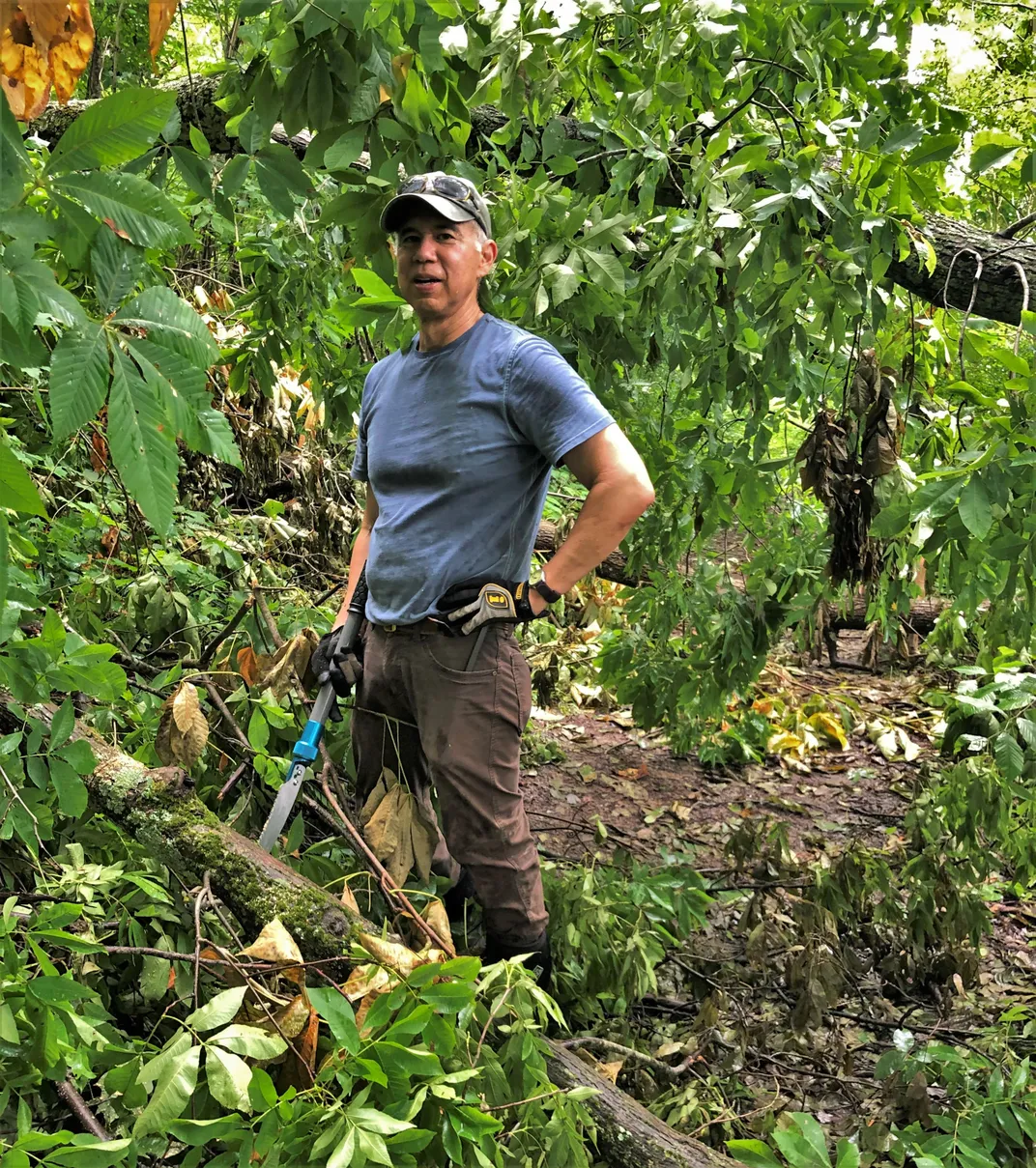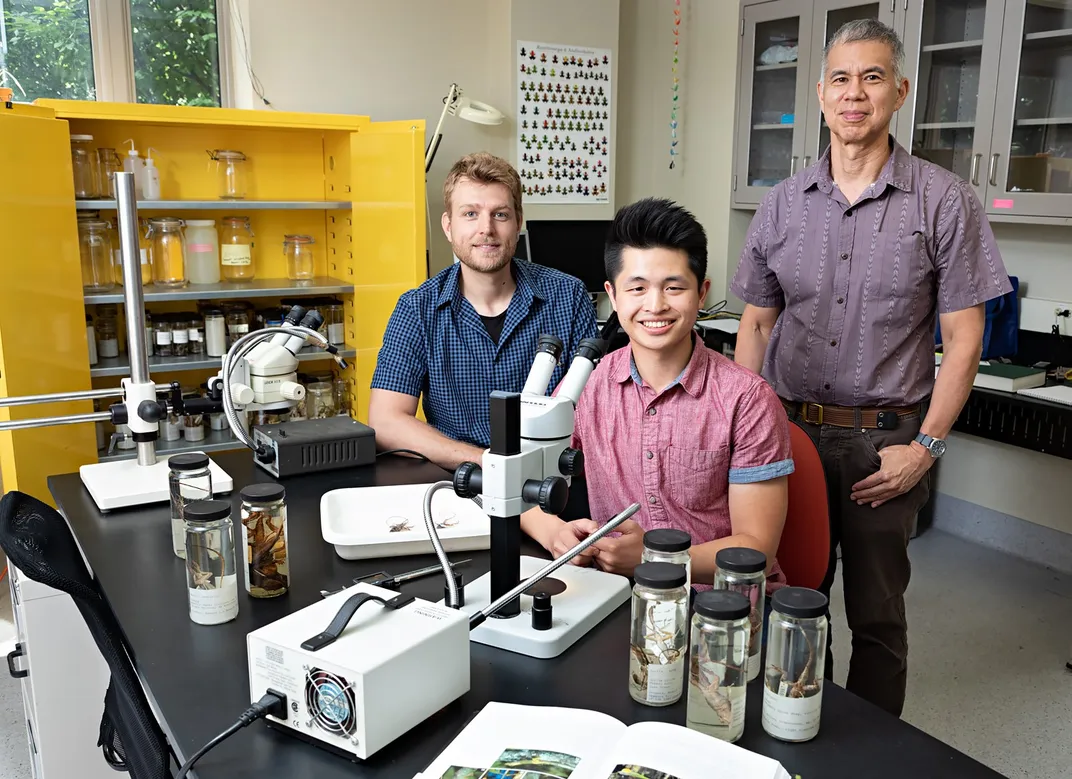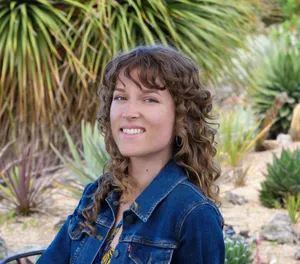NATIONAL MUSEUM OF NATURAL HISTORY
Say Hello to the Scientist Using Lizard Limbs to Unlock Evolution’s Secrets
For this month’s Meet a SI-entist, we caught up with Kevin de Queiroz to talk about the evolution of lizard legs and the joys of unplanned discoveries
/https://tf-cmsv2-smithsonianmag-media.s3.amazonaws.com/blogging/featured/A_green_and_white-spotted_lizard_on_orange_surface.jpg)
Contemplating the diversity of life on Earth can be an overwhelming task. But that’s what Kevin de Queiroz loves most about his job as a research zoologist. Having the world’s largest natural history collection on hand for reference certainly doesn’t hurt either.
De Queiroz is the curator of amphibians and reptiles at the Smithsonian’s National Museum of Natural History and for this month’s “Meet a SI-entist,” we caught up with him to talk about the evolution of lizard legs and the joys of unplanned discoveries.
Why amphibians and reptiles? How did you develop an interest for scaly, slimy animals and not the cute, furry ones?
Some of my earliest memories are of amphibians and reptiles. I think I gravitated to them because other animals, especially mammals and birds, are difficult to get close to. But with amphibians and reptiles, you can actually hold them in your hand and look at them up close, which is what appealed to me the most.
I don’t remember exactly when this was — I was maybe ten or twelve years old — but as soon as I found out that people study reptiles, I knew that’s what I wanted to do. At the time, I still had no clue what studying reptiles actually meant. But the more I learned about it, the more I thought, ‘yeah, this is what I want,’ and I never changed my mind.
Now as the curator of reptiles and amphibians at the Smithsonian, you work with a lot of preserved specimens. How are they used for research today?
The reptiles we have on exhibit at the Museum are just a tiny fraction of what we have in our collection. The other 800,000 or so specimens are being used in scientific research both by people at the museum, like me, and scientists all over the world.
There are all kinds of things our specimens are used for that the early collectors probably never anticipated. Early on, the main thing museum collections were used for was taxonomy, or figuring out relatedness between organisms, as well as comparative anatomy. Today, there are lots of people using new and established technologies on old specimens to study things from climate change to infectious diseases to genetics.
For example, there was one study a couple years ago where researchers were able to determine the age and life history of salamanders in our collection by taking cross-sections of their limb bones, similar to how we use tree rings. I’m sure many of our early collectors didn’t imagine that was possible.

Can you talk about your most recent research paper, which analyzed the museum’s collection of anole lizards?
One of the topics I study is called ecological morphology — ecomorphology, for short. It’s the idea that the ecology of an animal, like where it lives and what it eats, influences its morphology, or the size and shape of its body.
Recently, we published a paper on ecomorphology in Anolis lizards, which are found throughout the Americas, but mostly in the tropics. With anoles, the species tend to fit into different ecomorphs, or body shapes, adapted to living in different parts of the forest. The ones that live close to the ground and jump around a lot tend to have longer limbs. The ones that creep along on small twigs have shorter limbs and often have prehensile, or grasping, tails. The ones that live on leaves are usually green. When several anole species live together in a community, they will adapt and specialize to different parts of the habitat. This allows them to coexist in the same location by reducing competition for space and food.
There are six main ecomorphs recognized for anoles of the Greater Antilles islands in the Caribbean. In our study, we found strong evidence for a seventh body type made up of species adapted to a primarily ground-dwelling lifestyle. People have been studying the six traditional body types for decades, but until now, they hadn’t found evidence for a seventh.

You had an intern leading that study, what was that like?
We developed this study with an undergraduate intern, Jonathan Huie, through the Natural History Research Experiences program. My lab has sponsored several students through that program, and this student was really outstanding. Jonathan started working on a relatively small anole clade, or group of species descended from a common ancestor, but he collected the data very quickly and before we knew it, we were examining this whole giant group of Anolis lizards.
Collaboration can be a fun thing to do, especially if you bring different strengths. Jonathan and I complemented each other well because he’s really good at data analysis and using the latest statistical software, which was mostly developed after I was too old to master it. I had a lot more experience with the lizards, both in the field and the lab, and also with the study of adaptive radiations, so we worked together very well.
For early-career researchers, having a mentor is so important. What can mentorship do for you as an established scientist?
Apart from forming a great relationship with a rising researcher, one of the great benefits of being a mentor is you also learn a lot from it. If you don’t mentor others, it’s easy to say ‘well this is how I learned it, so I’m going to keep doing it this way’ — which is a recipe for stagnation. That doesn’t mean you can't learn new things on your own, but it's always harder if you have to do that all by yourself, and mentoring actually pushes you to do it.

You also spend a lot of time thinking about the relationships between organisms. What does that mean?
As an undergraduate, I had my own mentor who did a lot of phylogenetics, or figuring out the common ancestral connections among organisms. I got interested in that stuff early on, and one thing that fascinated me was the underlying theory — the logic of phylogenetics.
Take our hands, for example. We have five fingers on our hands. Anolis lizards also have five fingers, but horses only have one. Just looking at hands, you might be tempted to say that anoles and humans are more closely related to each other than either is to horses. But we know that horses, as mammals, are closer relatives to us than lizards are. So, what’s happening there? Well, the ancestor of all three animals had five fingers on its hands and horses have just changed a lot more than humans and anoles in that regard. Different parts of the body can evolve at different rates, and horses have diverged more from the ancestral condition than humans and Anolis lizards have.
For a long time, biologists operated under the idea: ‘more similar equals more closely related.’ That idea works okay as a rough approximation, but when you get down to the details, it's really not a good assumption to make. The logic of assessing relatedness and distinguishing one species from another gets complex very quickly.
Why is the logic of relatedness important to think about?
All life on Earth is the product of the evolutionary process, so it's a really important thing to understand. How can we know anything about the world we live in, including who we are and where we’re going, if we don't understand evolution? For this reason, I’ve devoted a lot of my career to making evolution a guiding principle in how we study and give names to life’s diversity.
Some people don't consider a pursuit important unless it has a direct bearing on an immediate human concern. I’m not one of those people. By that criterion, art, music and literature could be unimportant, too. The curiosity to learn more about the world we live in is part of what makes us human.
To me, figuring out the answer to some clearly laid out question is only part of the appeal of science. What’s often more exciting is coming to a realization or discovery that you weren’t trying to solve in the first place. There’s a very satisfying rush when you have those unplanned insights.
This interview has been edited for length and clarity.
Meet a SI-entist: The Smithsonian is so much more than its world-renowned exhibits and artifacts. It is a hub of scientific exploration for hundreds of researchers from around the world. Once a month, we’ll introduce you to a Smithsonian Institution scientist (or SI-entist) and the fascinating work they do behind the scenes at the National Museum of Natural History.
Related Stories:
Intern Helps Find First Vertebrate With Two “Powerhouse” Genomes
Meet the Scientist Using Fossils to Predict Future Extinctions
Viper’s DNA Reveals Ancient Map of South America
Get to Know the Leading Ladies of Science at the Smithsonian
Why Aren't St. Croix Ground Lizards on St. Croix?

